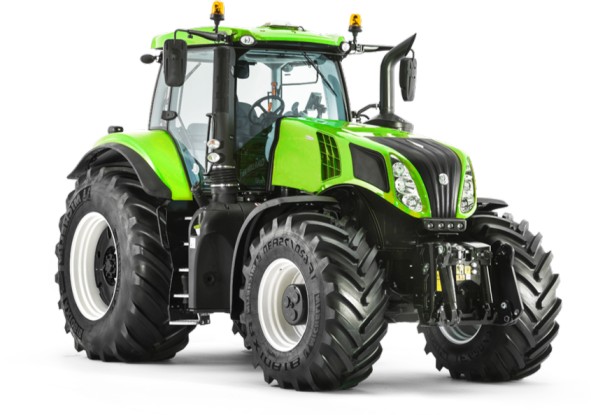Climate plays a significant role in the performance, durability, and lifespan of agricultural tractor parts. Whether it’s extreme heat, cold, humidity, or precipitation, each climate condition can have a detrimental effect on various components of a tractor. Understanding how different weather conditions affect agricultural tractor parts is essential for farmers who want to ensure their machinery operates efficiently and remains in good condition for as long as possible. This article explores the impact of climate on agricultural tractor parts and offers practical tips on how to protect them.
1. The Effects of Extreme Heat on Agricultural Tractor Parts
High temperatures can be particularly harsh on agricultural tractor parts, leading to overheating, increased wear, and even part failure.
-
Engine Overheating: In hot climates, the tractor’s engine is at risk of overheating, especially during prolonged use. Excessive heat can cause engine oil to thin, reducing its ability to lubricate engine components effectively. This increases friction and wear on the engine’s moving parts, potentially leading to engine failure.
-
Tire Degradation: High temperatures can cause the rubber in tractor tires to deteriorate more quickly, leading to cracks, reduced traction, and an increased risk of blowouts. Over time, exposure to extreme heat can significantly shorten the lifespan of tires.
-
Battery Life: Heat accelerates the chemical reactions inside a tractor’s battery, which can lead to a decrease in battery life. A battery that is frequently exposed to high temperatures may lose its ability to hold a charge, making it unreliable during critical tasks.
Protection Tips:
-
Regularly Check and Replace Engine Oil: Use high-quality engine oil with the appropriate viscosity for hot weather conditions. Regularly check the oil level and change it as recommended by the manufacturer to ensure the engine remains well-lubricated.
-
Tire Maintenance: Keep tires properly inflated to reduce the stress caused by high temperatures. Inspect tires regularly for signs of wear or cracking, and replace them as needed.
-
Battery Care: Store tractors in shaded areas or use battery insulation to protect against heat. Regularly check the battery’s charge and clean the terminals to ensure reliable performance.
2. The Impact of Cold Weather on Agricultural Tractor Parts
Cold weather presents its own set of challenges for agricultural tractor parts. Low temperatures can cause materials to become brittle, fluids to thicken, and batteries to lose efficiency.
-
Cold Starts: Cold temperatures make it difficult for the engine to start, especially if the tractor is left outside overnight. The cold can cause the engine oil to thicken, making it harder for the engine to turn over. This puts additional strain on the starter motor and battery.
-
Hydraulic System Issues: Hydraulic fluids thicken in cold weather, reducing the efficiency of the tractor’s hydraulic system. This can lead to slower response times for attachments like loaders and lifts, making operations more difficult.
-
Brittle Rubber Components: Cold weather can cause rubber components such as hoses, belts, and tires to become brittle and prone to cracking. This increases the risk of leaks, failures, and reduced performance.
Protection Tips:
-
Pre-Warm the Engine: Use an engine block heater to warm the engine before starting it in cold weather. This helps to reduce strain on the engine and battery, ensuring a smoother start.
-
Use Cold-Weather Fluids: Switch to hydraulic fluids and engine oils that are formulated for cold weather. These fluids remain more fluid at low temperatures, ensuring the hydraulic system and engine operate efficiently.
-
Inspect Rubber Components: Regularly check hoses, belts, and tires for signs of brittleness or cracking. Replace any damaged components to prevent unexpected failures during cold weather operations.
3. The Effects of Humidity and Moisture on Agricultural Tractor Parts
Humidity and moisture, whether from rain, snow, or condensation, can lead to rust, corrosion, and electrical issues in agricultural tractor parts.
-
Rust and Corrosion: Prolonged exposure to moisture can cause metal parts, such as the tractor’s body, engine components, and exhaust system, to rust and corrode. This weakens the structure of the tractor and can lead to costly repairs.
-
Electrical System Problems: Moisture can seep into the tractor’s electrical system, causing short circuits, corrosion of terminals, and failures in critical components such as the starter motor, alternator, and lights.
-
Fuel Contamination: In humid or rainy conditions, moisture can enter the fuel tank, leading to water contamination. This can cause poor engine performance, stalling, and potential damage to the fuel injectors and engine.
Protection Tips:
-
Regularly Clean and Dry the Tractor: After exposure to rain, snow, or wet conditions, clean and dry the tractor thoroughly. Pay special attention to metal surfaces and the undercarriage to prevent rust and corrosion.
-
Protect the Electrical System: Apply dielectric grease to electrical connections to repel moisture and prevent corrosion. Store the tractor in a dry, covered area to protect it from humidity and moisture when not in use.
-
Use Fuel Stabilizers: Add a fuel stabilizer to the tractor’s fuel tank to prevent moisture contamination. Regularly check and drain any water that may have accumulated in the fuel tank.
4. The Impact of Dust and Dirt in Dry Climates
Dry, dusty climates can lead to the accumulation of dirt and debris in various parts of the tractor, causing wear and tear, reduced efficiency, and potential damage.
-
Air Filter Clogging: Dust and dirt can quickly clog the tractor’s air filter, reducing airflow to the engine and leading to poor performance and increased fuel consumption. A clogged air filter can also cause the engine to overheat.
-
Increased Wear on Moving Parts: Dust and dirt can act as abrasives, increasing wear on moving parts such as the engine, transmission, and hydraulic system. This can lead to premature wear and potential breakdowns.
-
Cooling System Issues: Dust and debris can accumulate in the tractor’s cooling system, reducing its efficiency and leading to overheating, especially during heavy work.
Protection Tips:
-
Regularly Replace Air Filters: In dry and dusty conditions, check and replace air filters more frequently to ensure the engine receives clean air. Consider using heavy-duty filters designed for dusty environments.
-
Keep the Tractor Clean: Regularly wash the tractor to remove dust and dirt from critical components. Pay attention to areas like the engine, cooling system, and moving parts to prevent abrasive wear.
-
Inspect and Maintain the Cooling System: Clean the radiator and cooling system regularly to ensure they are free of dust and debris. This helps maintain proper engine temperature and prevents overheating.
Conclusion
Climate conditions have a profound impact on the performance and longevity of agricultural tractor parts. Whether dealing with extreme heat, cold, humidity, or dust, understanding how these factors affect your tractor is essential for maintaining its reliability and efficiency. By taking proactive measures to protect your agricultural tractor parts from the effects of climate, you can extend their lifespan, reduce maintenance costs, and ensure your tractor remains a valuable asset on your farm. Regular maintenance, proper storage, and the use of climate-appropriate fluids and materials are key to keeping your tractor in top condition, regardless of the weather.




